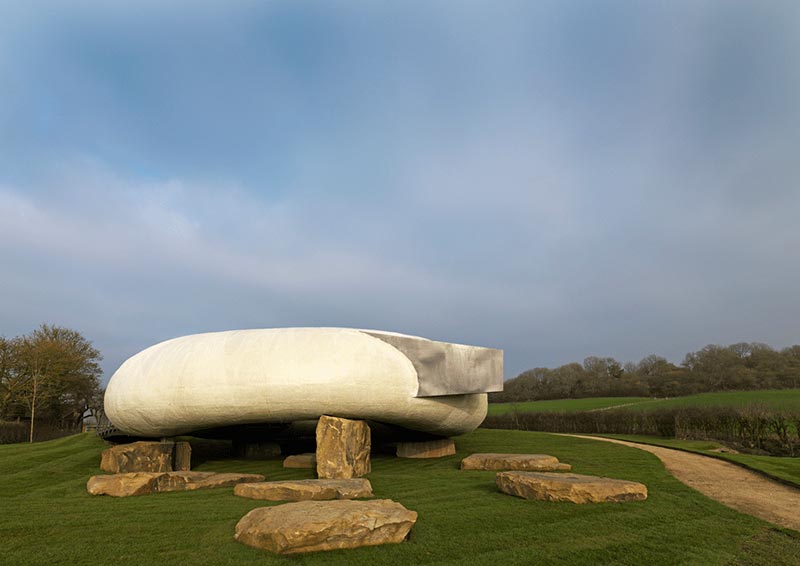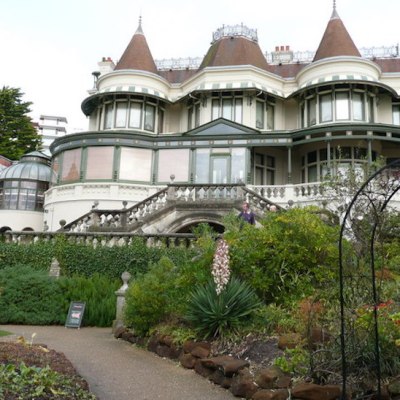Digby Warde-Aldam surveys the London art scene…
On a miserable morning last week, I caught the train out to Stratford Olympic Park to watch London mayor Boris Johnson unveil a memorial to the victims of 9/11. The occasion was appropriately funereal. There was a heavy mist over East London, and the rain spat down as black-clad press delegates took position on a hillock next to Zaha Hadid’s aquatics centre. The monument, a 28-ft bit of debris left from the attacks, stood withered at the top, like a tree incinerated by lightning.
We huddled under our umbrellas listening to lists of acknowledgements and tributes from the assorted speakers. Lord forgive me, but when art historian Simon Schama took to the stage, I can’t have been alone in wondering how much longer this solemn (and very wet) event could drag on for. And then something extraordinary happened. As Schama reached a climax extolling the virtues of tolerance and respect, the clouds parted and the sun broke through. It was an accidental piece of theatre that Prospero couldn’t have choreographed better.
◎
With all attention focused on the spring art fairs in New York, Hong Kong and Maastricht, it’s been a quiet couple of weeks here in London. The most interesting new show I’ve seen in these parts is Evan Roth’s exhibition at Carroll/Fletcher (until 11 April), which will teach you more about the internet than any journalism. Bottom of the barrel was Christian Rosa’s rather underwhelming show at Jay Jopling’s monolithic outpost in Mason’s Yard (until 23 May).
Jopling, who opened the first incarnation of the White Cube in a single room on Duke Street St James in 1993, is far from the first iconoclastic impresario to set up shop in the area. I’ve just finished Barry Miles’s book London Calling: a countercultural history of London since 1945, and highly recommend it. In the 1960s, Miles was one of the founders of the avant-garde Indica Gallery. Indica operated from number 6 Mason’s Yard, (now home to Stephen Ongpin & Guy Peppiatt) and introduced London to the likes of Liliane Lijn, the Boyle Family and Yoko Ono. It was at a 1966 solo show that the latter met her future husband, John Lennon.
Just across Piccadilly on Duke Street was the Robert Fraser gallery, the era’s other great champion of the avant-garde. Fraser was a dealer probably best known as the man depicted beside Mick Jagger in Richard Hamilton’s iconic ‘modern history painting’ Swingeing London ’67. The painting famously shows the two shielding their faces from the press after being convicted for possession of drugs. Fraser was ‘a weird mixture of avant-garde and very old fashioned’ with ‘more front than Selfridges’ and a pathological fear of his own mother, according to Jagger’s band mate Keith Richards.
But Fraser was much more than a rock’n’roll hanger-on. Walking around Pace gallery’s Brian Clarke-curated ‘A Portrait of Robert Fraser’ (until 1 April) is a mind-boggling experience; Fraser exhibited work by everyone from Patrick Caulfield and Hamilton to Keith Haring and Jean-Michel Basquiat, and as the fascinating archive material shows, he was chummy with all of them. On paper, Pace’s exhibition looks exhaustive – but Fraser’s story is so fascinating that, really, it demands a full museum overview. If proof is needed, I direct you to Harriet Vyner’s superb biography Groovy Bob.
◎
Last year, international super-gallery Hauser & Wirth announced it was opening a new space in rural Somerset. Art watchers around the world scratched their heads and asked the same question: why?
Last Friday, I finally got the chance to travel west and find out. The answer is seductively simple – space, and the lure of a good bar and restaurant. It’s an absurdly pretty area, and the art ain’t bad either. Architect Smiljan Radić’s 2014 Serpentine pavilion has just been reconstructed in the gallery’s garden, and in celebration of this, the main gallery has been given over to a show called ‘LAND MARKS: Structures for a Poetic Universe’ (until 21 June).
It’s a glorious little exhibition, full of sketches and plans for (mostly unbuilt) structures that take architecture to its utopian extreme. As co-curator Nicholas Olsberg stresses, this is a show about ideas, not buildings. One such idea is represented by the fascinating series of illustrations Carlos Diniz drew as part of Minoru Yamasaki’s successful proposal for the original World Trade Centre. I stared at them gobsmacked: in the space of three days, I had gone from looking at the jagged wreckage of a global landmark to gawping at the optimism of its genesis. Somewhere in this narrative, I’m convinced there’s a great exhibition to be had.




